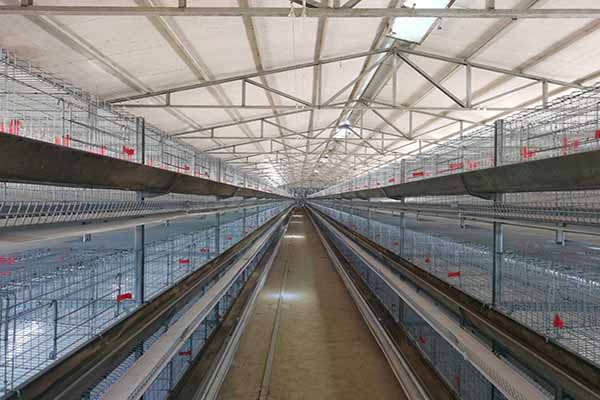Optimizing Battery Cages for 20,000 Chickens in Nigeria: A Comprehensive Guide
Understanding the Nigeria Poultry Industry
The poultry industry in Nigeria has seen significant growth over the years, with a demand for eggs and chicken meat soaring. With the capacity to house 20,000 chickens, battery cages have become a popular choice for many commercial farms. However, ensuring the well-being of these birds while maximizing production is crucial.
Why Battery Cages for 20,000 Chickens?
Battery cages offer several advantages, such as:
– Efficient use of space
– Reduced risk of disease
– Easy management
Key Considerations for Designing Battery Cages for 20,000 Chickens
1. Cage Size: The ideal size for a battery cage is 60cm x 60cm. This allows for adequate space for the chickens to move around and access feed and water.
2. Ventilation: Proper ventilation is essential to maintain a healthy environment. Ensure that each cage has sufficient openings for fresh air circulation.
3. Flooring: Use a solid floor with a drainage system to prevent the buildup of waste and maintain hygiene.
4. Water and Feed Access: Ensure that each cage has easy access to water and feed, minimizing the risk of waste and disease.
5. Ventilation and Temperature Control: Install fans and temperature controllers to maintain a comfortable environment for the chickens.
Statistics and Data
– Space Requirement: For 20,000 chickens, you will need approximately 1,200 square meters of space.
– Ventilation: Aim for a ventilation rate of 1 cubic meter per bird per hour.
– Water Consumption: Each chicken consumes around 0.5 liters of water per day.
Case Study: Success Story
A commercial farm in Nigeria recently implemented a battery cage system for 20,000 chickens. After just six months, they experienced a 30% increase in egg production and a 20% reduction in disease incidents.
Investing in the Right Equipment
When investing in battery cages, it is essential to choose high-quality equipment that can withstand the demands of a large-scale operation. Consider the following:
– Cage Materials: Choose durable materials like steel or high-quality plastic.
– Automatic Feeding and Watering Systems: These systems can save time and reduce labor costs.
– Monitoring and Control Systems: Implementing these systems can help you manage the farm more efficiently.
Conclusion
Investing in battery cages for 20,000 chickens in Nigeria can be a profitable venture. By following these guidelines and choosing the right equipment, you can maximize production and ensure the well-being of your birds.
Get Your Free Liv-i Mechanical Chicken Farm Design and Equipment Quote
Are you planning to set up a battery cage system for 20,000 chickens in Nigeria? Contact us today to get a free, no-obligation design and equipment quote from Liv-i Mechanical.





